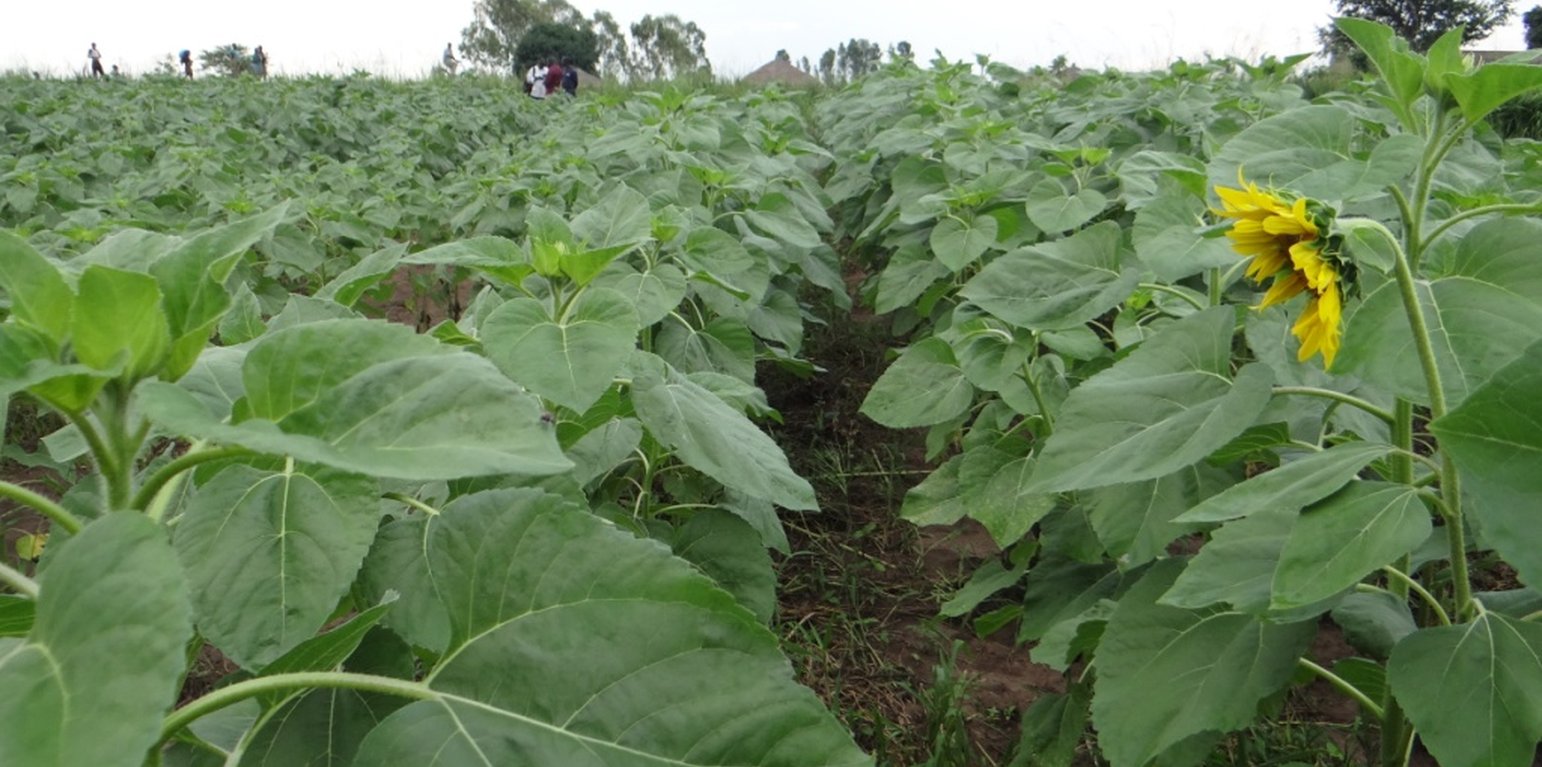



In this practice, the farmer planted sunflower (Helianthus) seeds at a spacing recommended for the particular variety. Sunflower variety PAN7033 and AGISUN was cultivated on 1 acre of land at a spacing of 15cm within row and 30cm between rows.
To plant crops in a row, the farmer has to ensure that the field is finely prepared. During planting, pegs are fitted at a spacing corresponding to spaces between the rows (30cm), along the width of the field. Ropes are then tied on the pegs along the length of the field. The rope guides the person who will be digging the planting holes, while another person would be dropping the seeds in the holes. After digging the holes in a row, the rope is transferred to the next set of pegs and the process is repeated. These activities require a minimum of 10 people to be working on the farm in order to plant 1 acre of sunflower in a day.
In this way; high yield is obtained from the crop. Activities like weeding, spraying, fertilizer application, harvesting becomes easy hence labor demand is reduced. Although there are elaborate gardening pegs and ropes in the market, the rope and pegs can be made from locally available materials hence reducing costs. Crop planted in rows may reduce surface runoff by planting in a homogenous way and improve maintain a consistent soil cover.
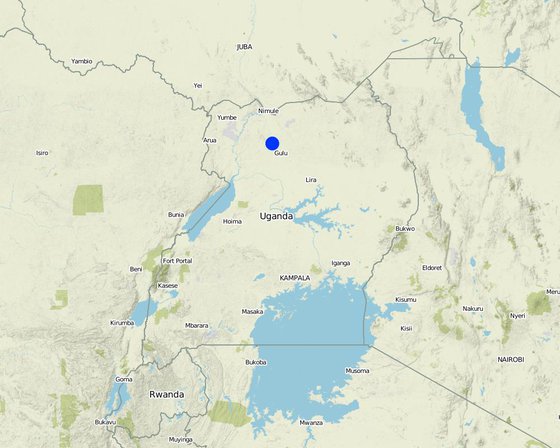
Location: Amuru District, Northern Region,Uganda, Uganda
No. of Technology sites analysed: single site
Spread of the Technology: applied at specific points/ concentrated on a small area
In a permanently protected area?:
Date of implementation: 2015; less than 10 years ago (recently)
Type of introduction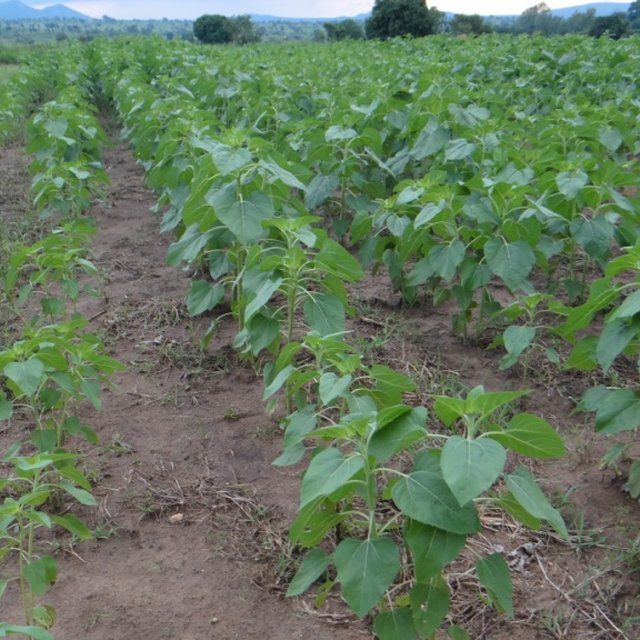






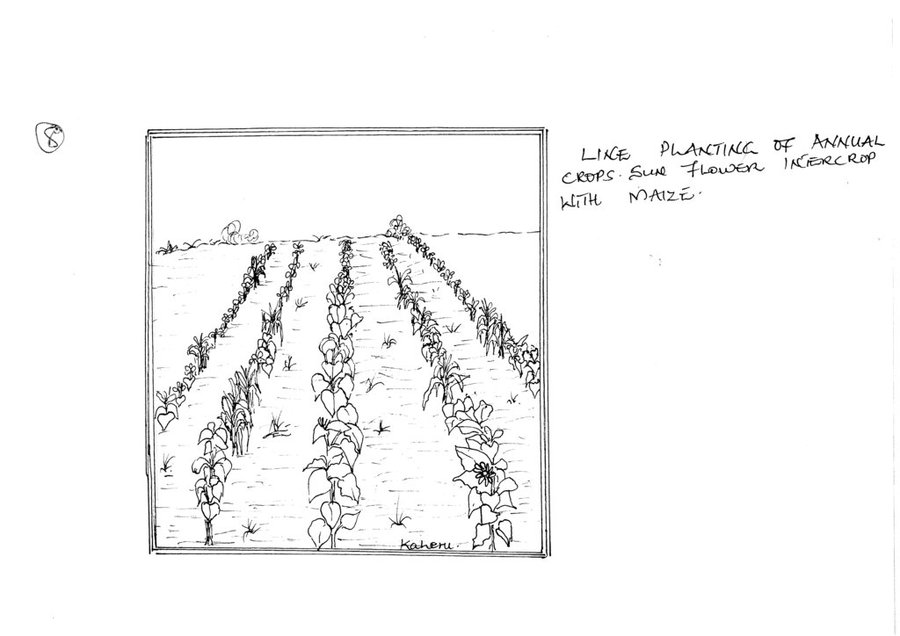
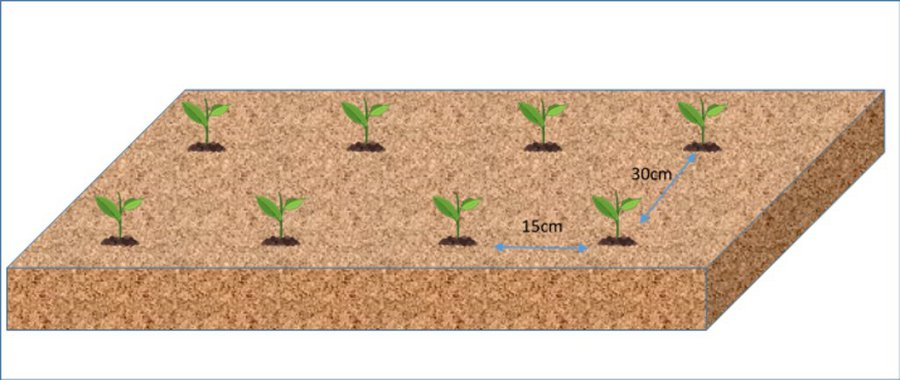
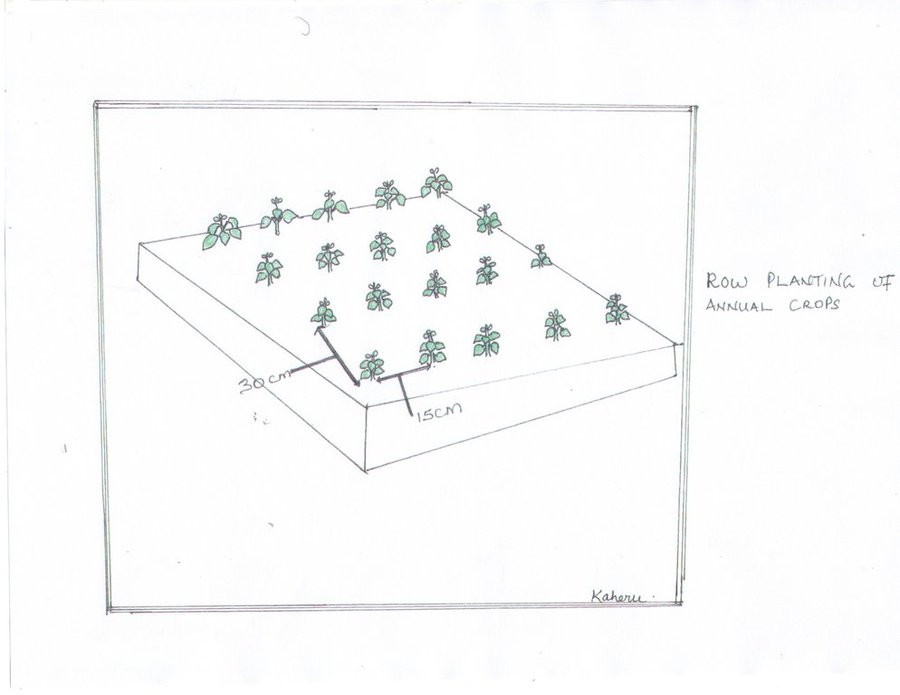
| Specify input | Unit | Quantity | Costs per Unit (UGX) | Total costs per input (UGX) | % of costs borne by land users |
| Labour | |||||
| Labour for planting | Persons | 10.0 | 5000.0 | 50000.0 | 100.0 |
| Equipment | |||||
| Hoes | Pieces | 3.0 | 10000.0 | 30000.0 | 100.0 |
| pegs | Pieces | 6.0 | 2000.0 | 12000.0 | 100.0 |
| ropes | Rolls | 1.0 | 10000.0 | 10000.0 | 100.0 |
| Plant material | |||||
| Seeds | Kgs | 30.0 | 5000.0 | 150000.0 | 100.0 |
| Total costs for establishment of the Technology | 252'000.0 | ||||
| Specify input | Unit | Quantity | Costs per Unit (UGX) | Total costs per input (UGX) | % of costs borne by land users |
| Labour | |||||
| Labour for harvesting and monitoring. | persons | 5.0 | 5000.0 | 25000.0 | 100.0 |
| Total costs for maintenance of the Technology | 25'000.0 | ||||
High yield and pod filling.
Row planting technique.
Especially on labour.
From the sale of harvests (soya and sunflower).
Use of the soya bean residues.
Soil organic matter increased due to application of soya residues.